This blog tells the stories of what I experience, what I get excited about, and what I see during my travels.
Don't wanna be here? Send us removal request.
Text
ANKARA

If I had to rank the places I’ve visited, Ankara would easily be at the top of my list. I’ve been there both as a tourist and as an intern — once exploring the city from the outside, and once living in it like a local. These two different experiences made Ankara feel like two completely different cities to me. And honestly, I’ve always preferred feeling like I belong, rather than just visiting.
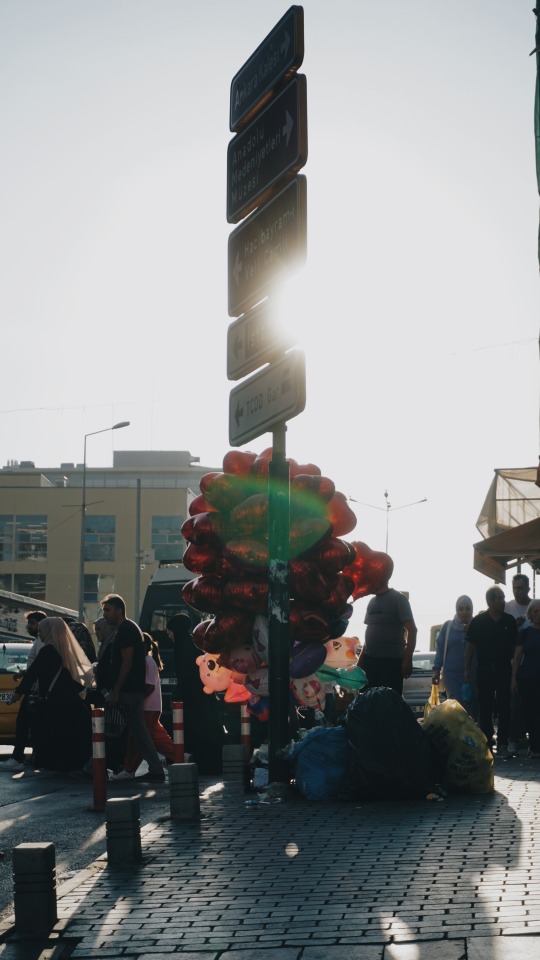
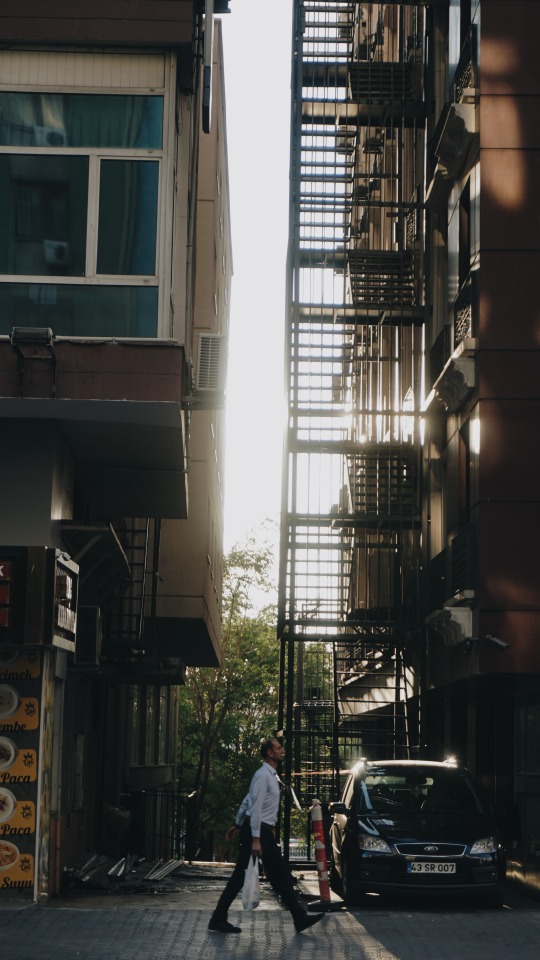
I remember my most recent trip more clearly. Even just walking from the bus terminal to the metro station, I met so many warm-hearted people. Many offered help without me even asking. Ankara may seem reserved at first glance, but it’s also full of warmth and energy. It’s like people there live two lives — one shaped by their professional, white-collar routines, and another shaped by a surprisingly vibrant social life. The more restricted they are at work, the more freely they seem to live outside of it.
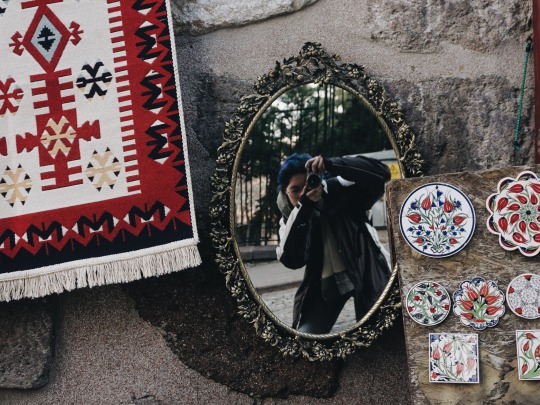
I met so many amazing people, made friends, went out, visited museums, climbed up endless hills... and I genuinely love every street I’ve walked through in Ankara. The textures of the city vary so much — from neighborhood to neighborhood, each has its own atmosphere. And with these shifts in texture, the people also change. Yet deep down, there’s something shared — a common spirit shaped by Ankara itself.
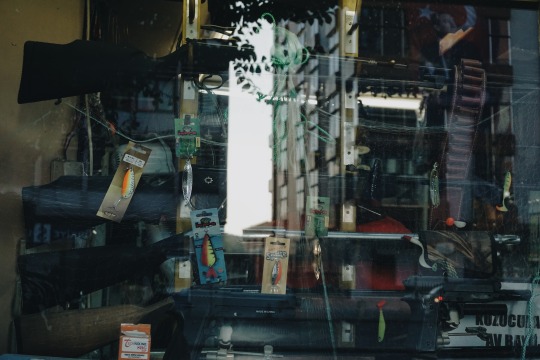
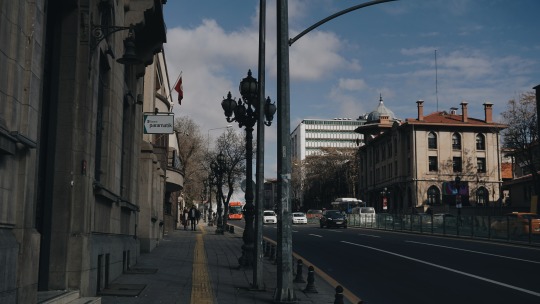
1 note
·
View note
Text
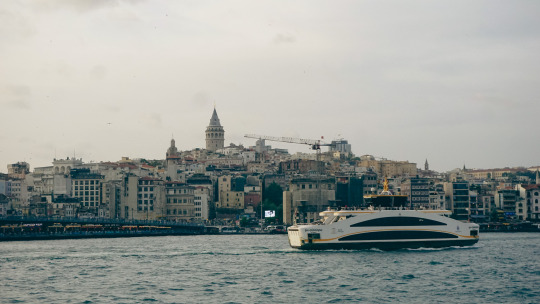
First Day
I will talk about my general experiences about the first day. Even though it took a while for us to arrive in Istanbul, we were able to reach the Esenler bus station. Batuhan picked us up from the bus station and we went home for breakfast. After eating, we threw ourselves into the streets.
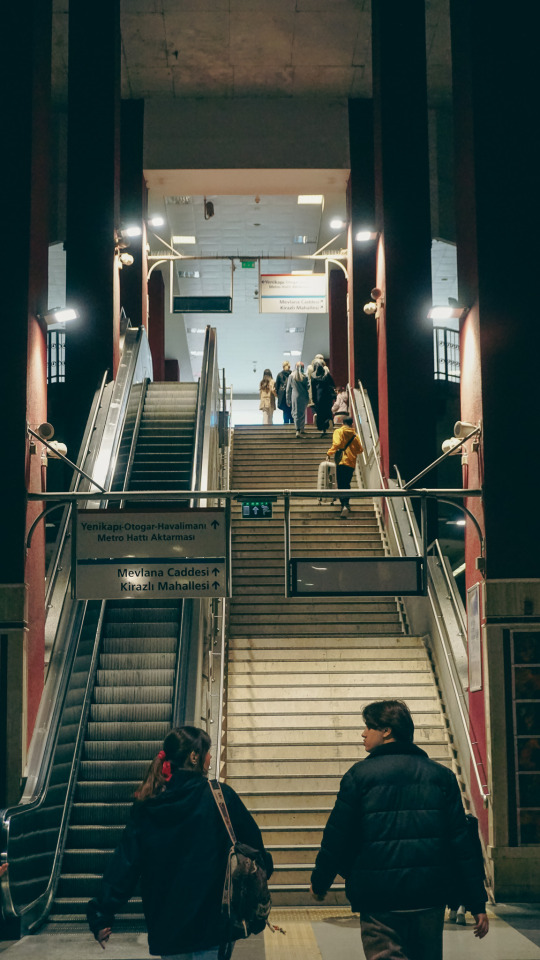
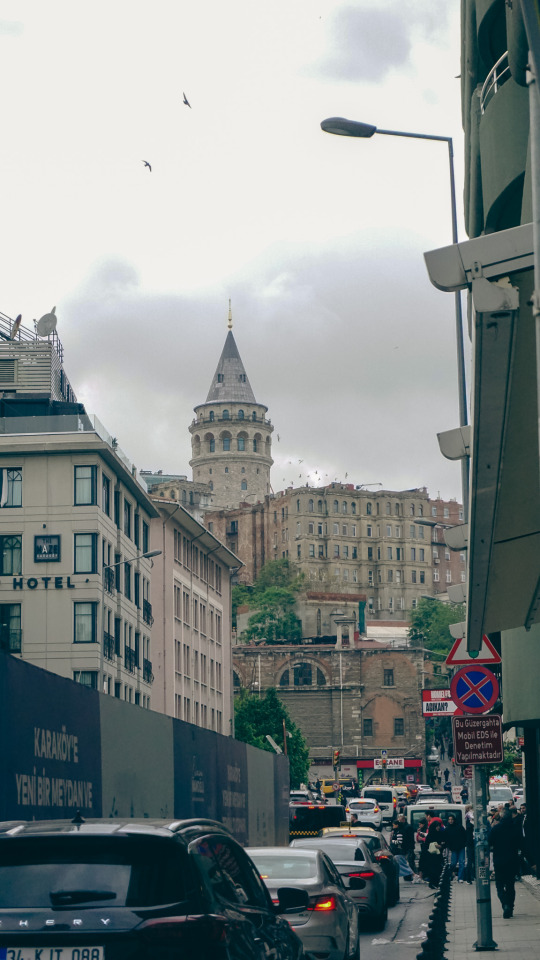
After a small city like Kayseri, the hugeness of Istanbul really surprised us. We even looked at the architecture of the metro stop with our mouths open.
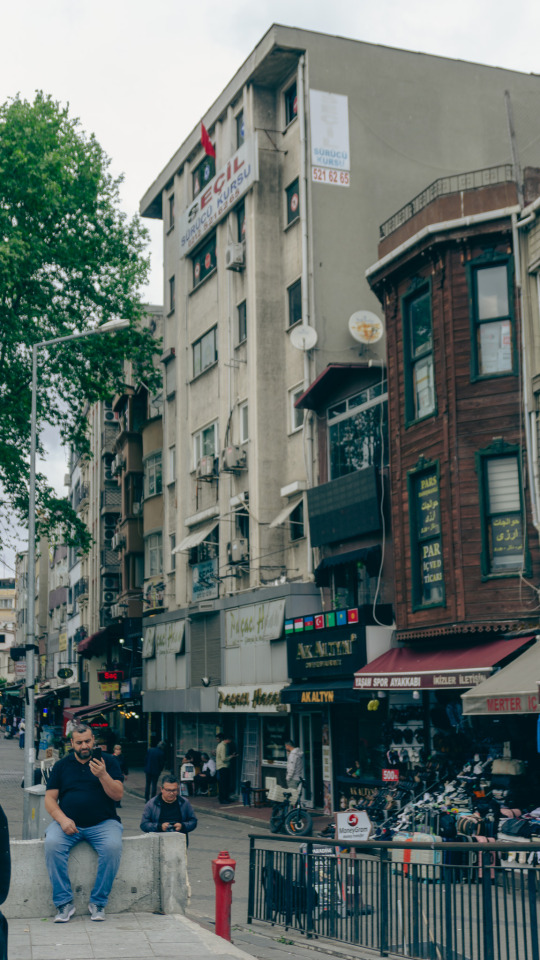
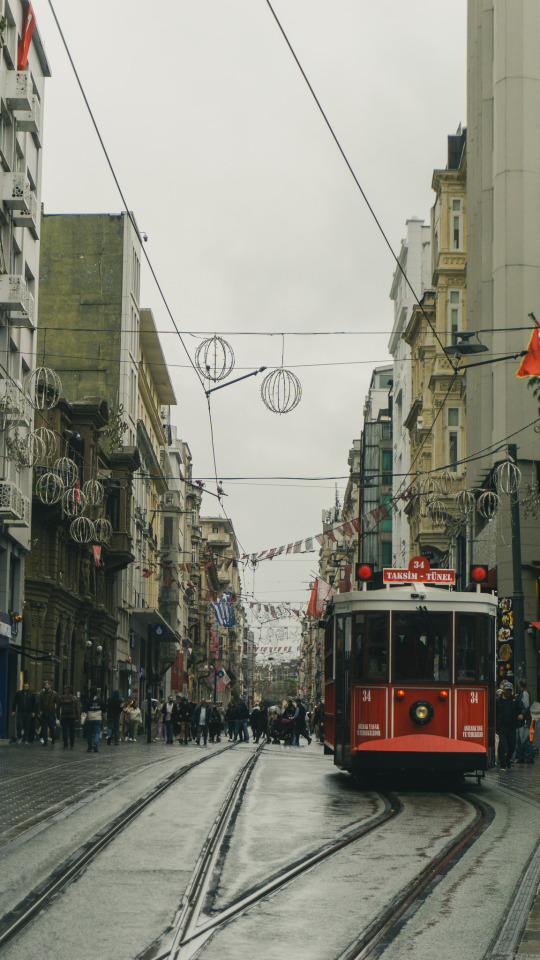
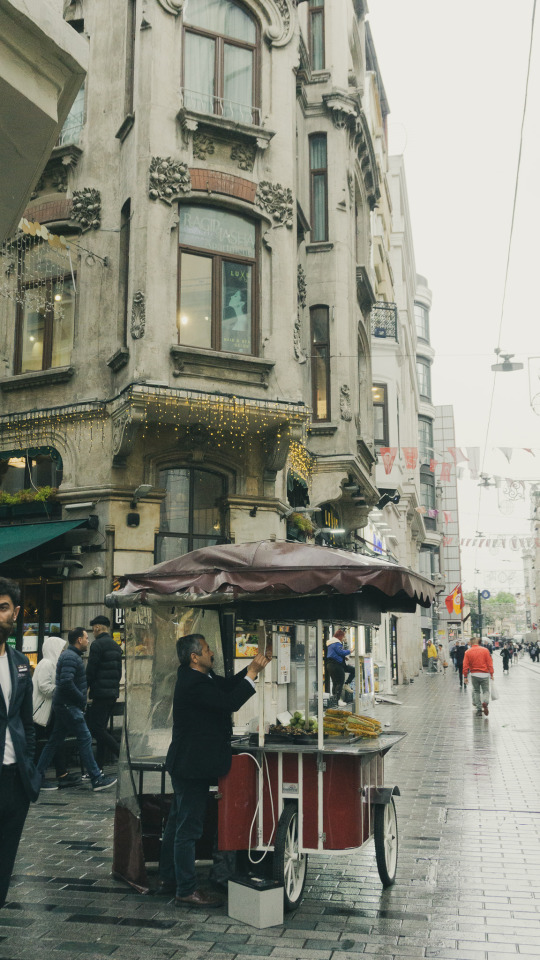
The streets were very beautiful. Even the nameless streets for 3 days impressed me greatly.

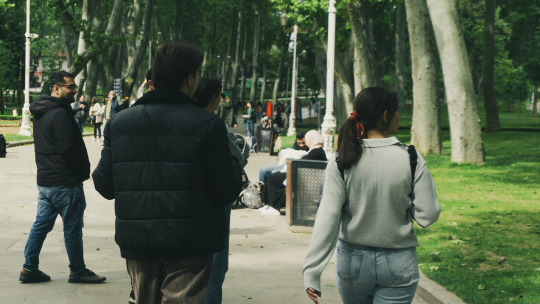
We went to Gülhane Park. It was a lush landscape. With its carefully manicured lawns, huge centuries-old trees, walking paths and seating areas, it was a perfect place to relax. Even sitting for a few hours could improve one's psychology.

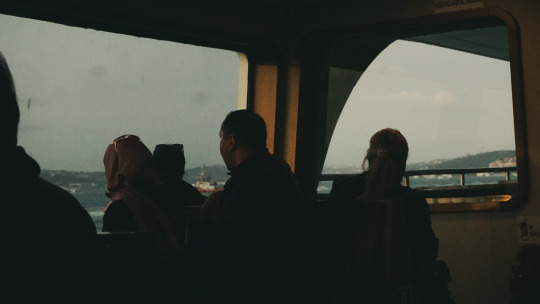

We went to Kadıköy by ferry. The ferry experience was one of my favorite things in Istanbul. We had a journey with magnificent scenery. There were artists playing music on the ferry, which made the journey more unique.
Our first day was spent getting lost in the streets by ourselves and we enjoyed it very much.
P.S. The next posts will be about the structures that remain in my mind and left a mark on me. I will share without a time order
0 notes
Text
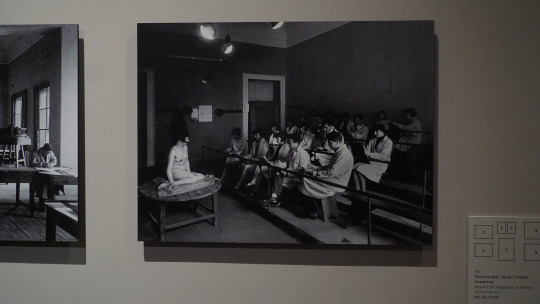
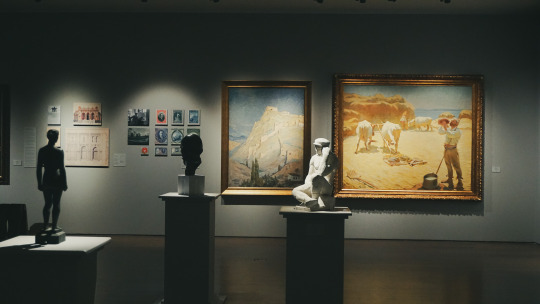
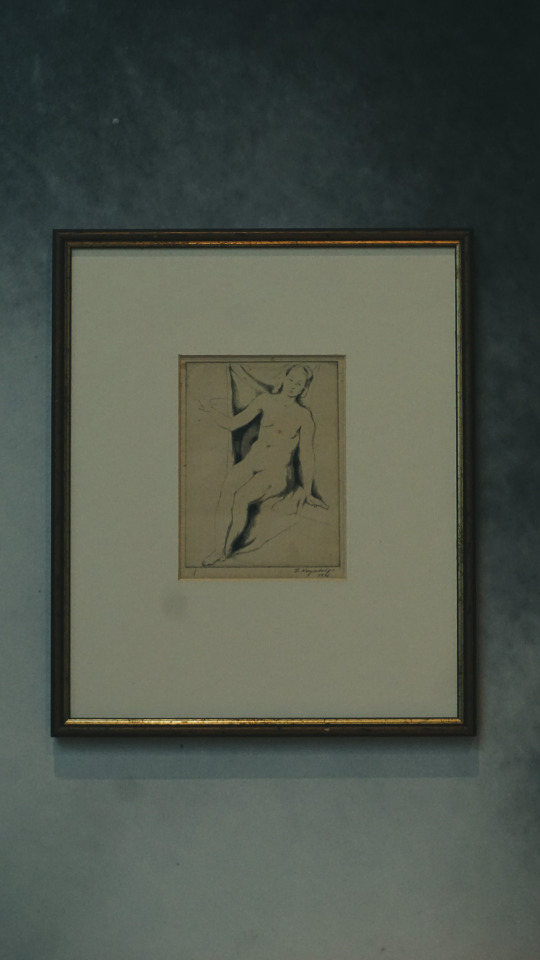
MSGSÜ Resim Heykel Museum
MSGSÜ Resim Heykel Museum was a huge museum that exhibited many collections. And since we had very little time, it was a museum that we visited by running around a bit.
I loved the images created with perspective inside the building. It's a nice material for taking photos.
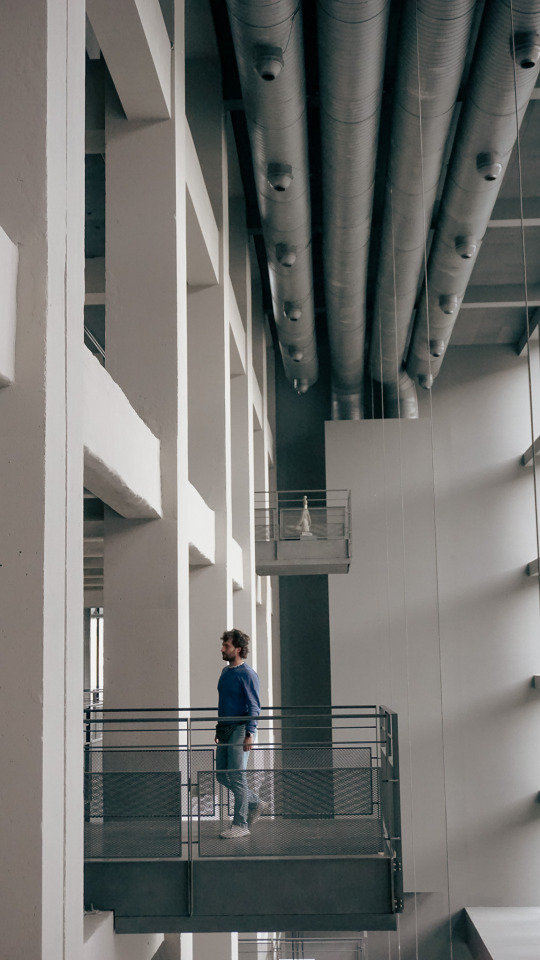
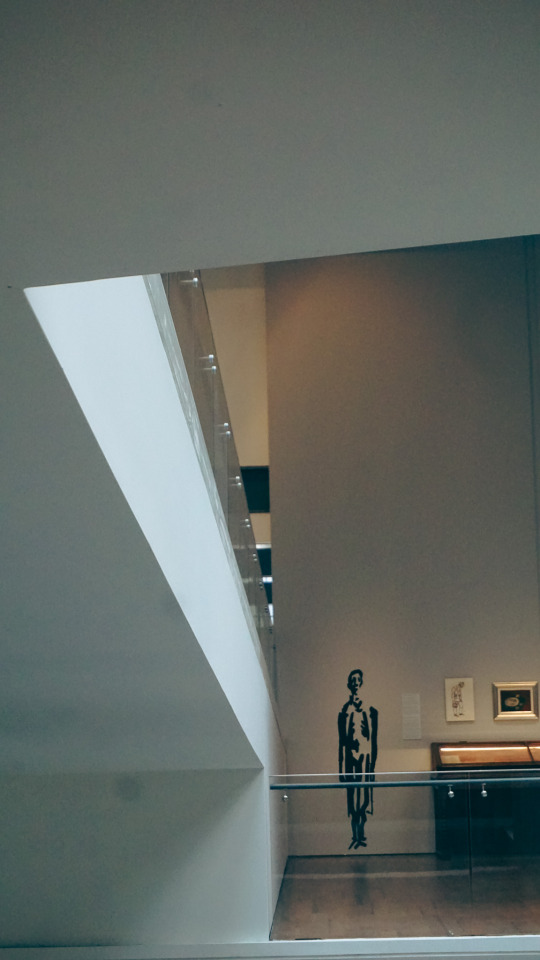
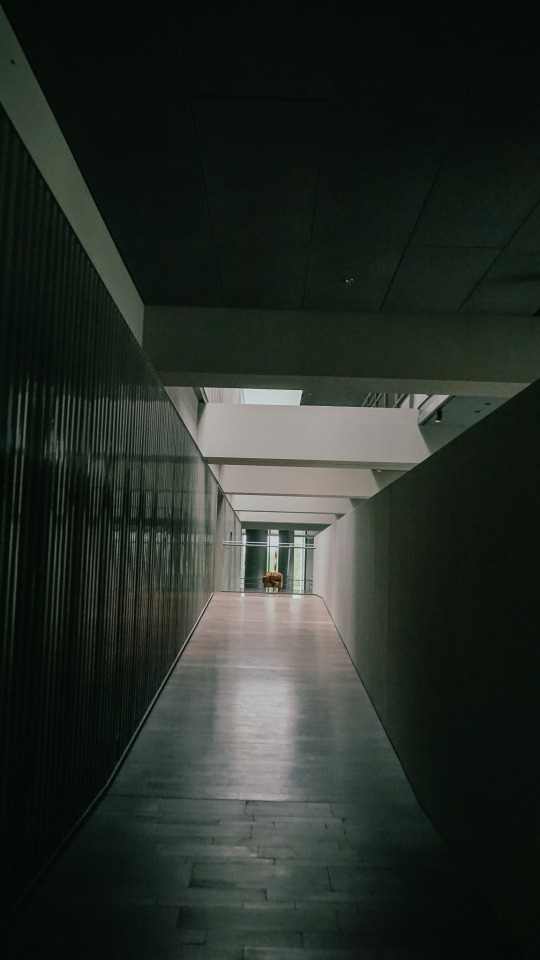
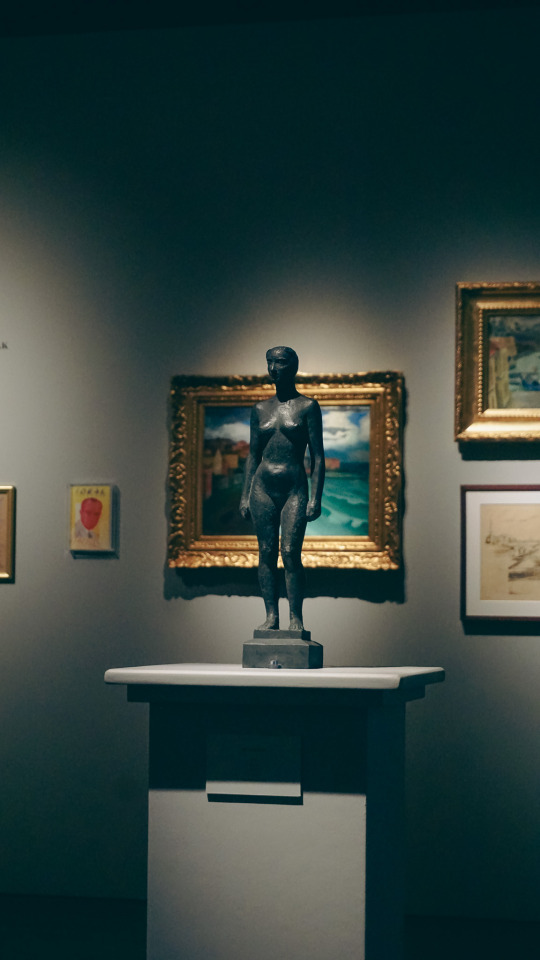

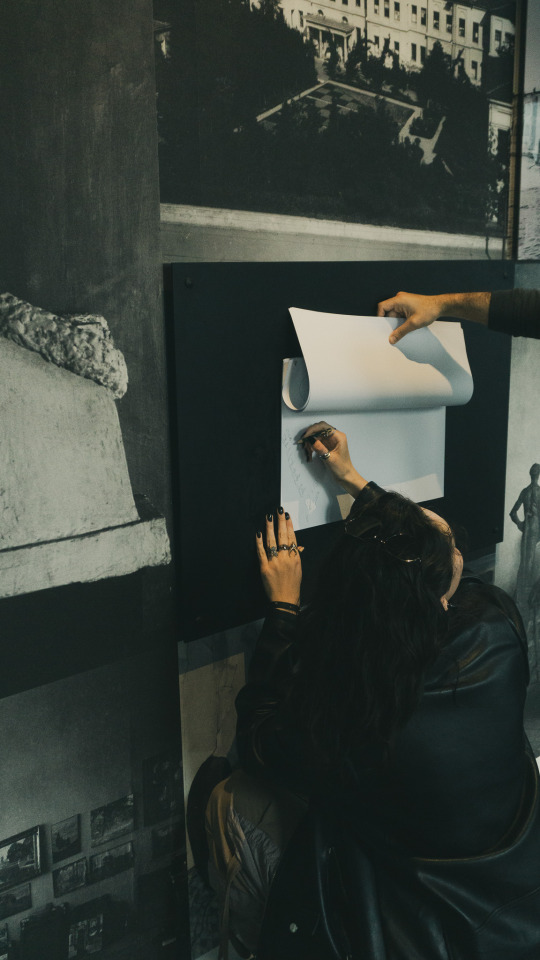
0 notes
Text
Pertevniyal Valide Sultan Camisi
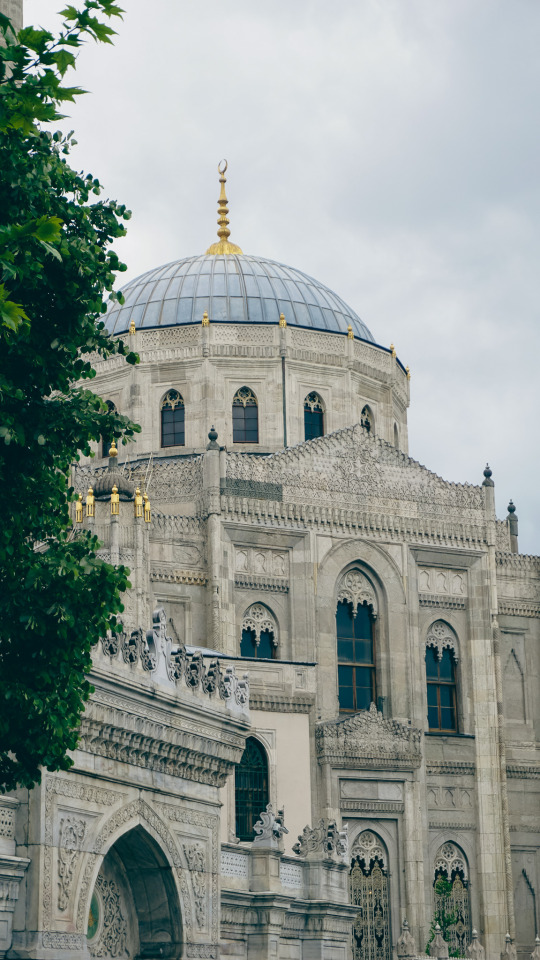
When you stand in front of the Pertevniyal Valide Sultan Mosque, you are first greeted by the impressive and magnificent exterior of the building. Built at the end of the 19th century, this mosque offers an elegant combination of Ottoman and European architecture.
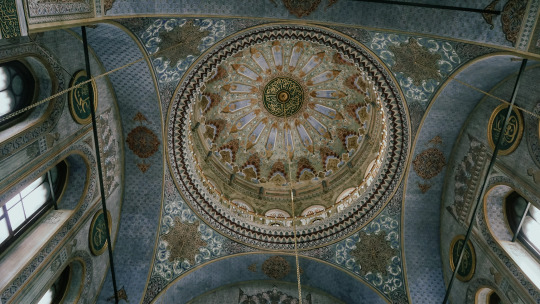
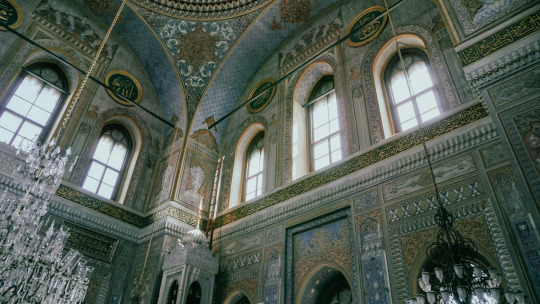
When you look at the exterior of the mosque, the intricate decorations and details immediately attract your attention. Arched windows and stonework show how carefully the building was designed. The fine stone carvings on the exterior embody art and mastery in every detail.
You see the classical lines of Ottoman architecture in the general structure of the mosque, but the European influence is also evident. This combination gives Pertevniyal Valide Sultan Mosque a unique character. As you wander around the exterior of the mosque, you notice a different detail in every corner, and these details encourage you to constantly explore.

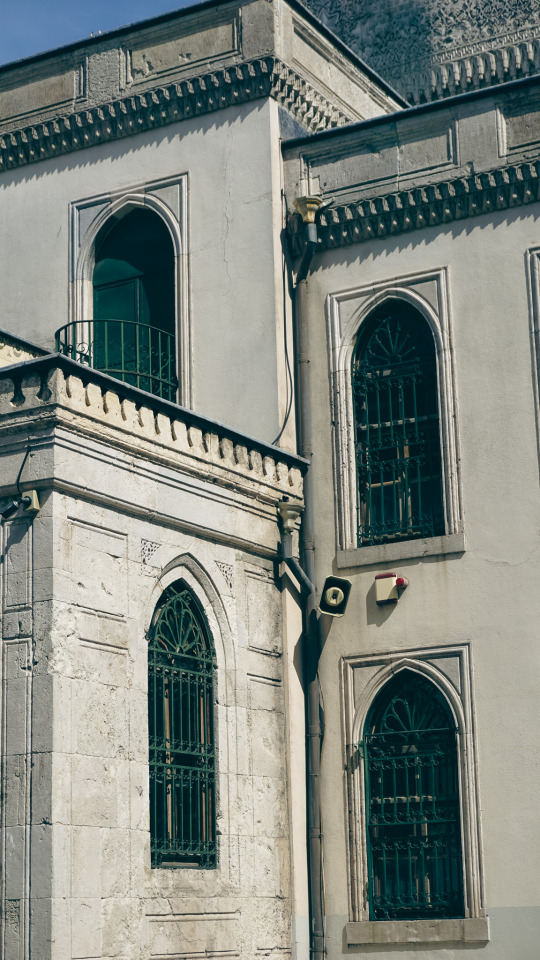
Pertevniyal Valide Sultan Mosque rises among the crowds of Aksaray and attracts attention as an important structure both historically and architecturally. As you stand in front of the mosque and watch this elegant and magnificent structure, you feel the cultural and historical richness of Istanbul once again. This mosque is not only a place of worship, but also a work that fascinates its visitors with its architecture.
0 notes
Text
Bezm-i Alem Valide Sultan Camii

Bezm-i Alem Valide Sultan Mosque is located in the Dolmabahçe district of Istanbul, right next to the Bosphorus. This mosque, completed in 1851, is an important architectural work from the last period of the Ottoman Empire. Named after Sultan II. He received it from Bezm-i Alem Valide Sultan, Mahmud's wife and Sultan Abdülmecid's mother.
The architecture of the mosque stands out as an example of Neo-Baroque and Empire styles blended with Ottoman architecture. The exterior of the mosque is built using white marble and stone, giving the structure an elegant and bright appearance. The main entrance door attracts attention with its ornate arches and detailed engravings.
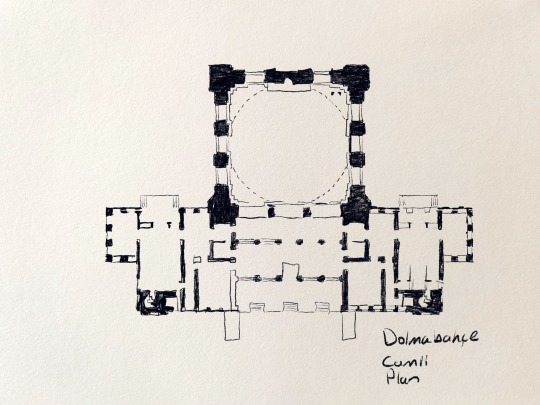
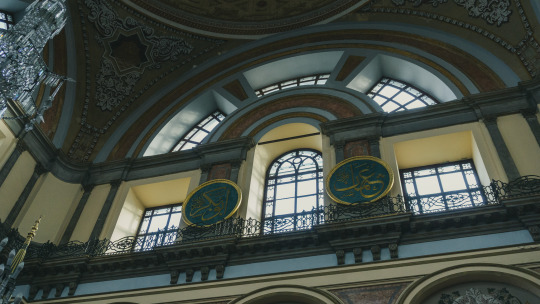
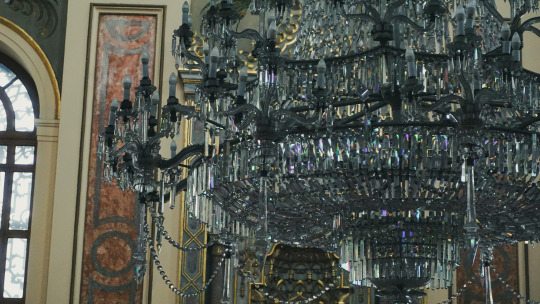
The painting on the inner dome of the Bezm-i Alem Valide Sultan Mosque creates a particularly striking and impressive optical illusion. When you look at the dome, you notice that thanks to the painting, the dome looks higher and deeper than it is. This effect occurs thanks to the perspective techniques used by the artist and the arrangement of the patterns.
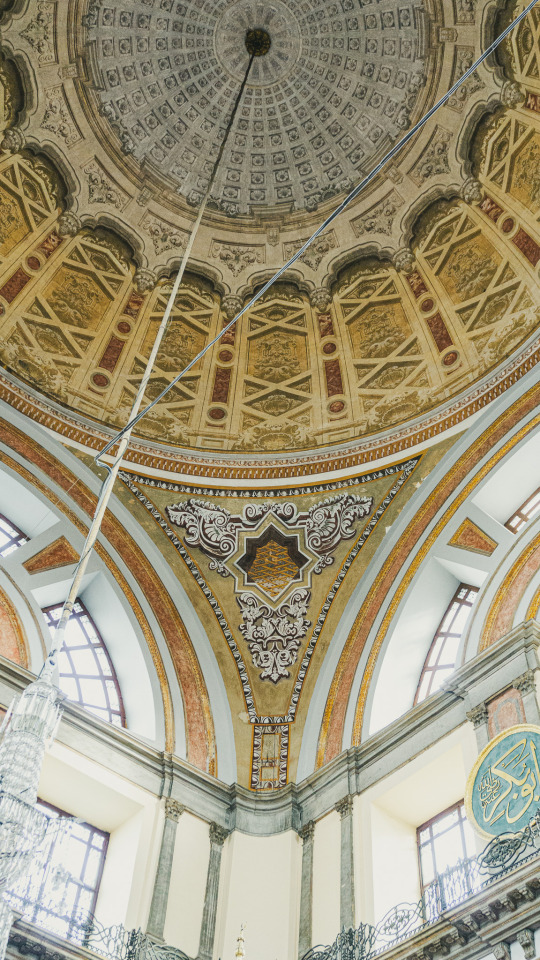

Bezm-i Alem Valide Sultan Mosque combines both classical Ottoman features and Western influences in terms of architecture. The details of both its exterior and interior reflect the richness and aesthetic understanding of the period.
0 notes
Text
4. Vakıf Han

Located in Sirkeci, one of the historical districts of Istanbul, 4. Vakıf Han rises in a quiet corner in the chaos of the city. This historical building was built by the foundation during the Ottoman period and still functions today.
The architecture of the inn bears the characteristic features of the Ottoman Empire. The cut stones and arched windows used on the exterior bear the traces of Ottoman architecture. The building's majestic entrance door is decorated with crafted wood details and offers an inviting atmosphere to welcome visitors.
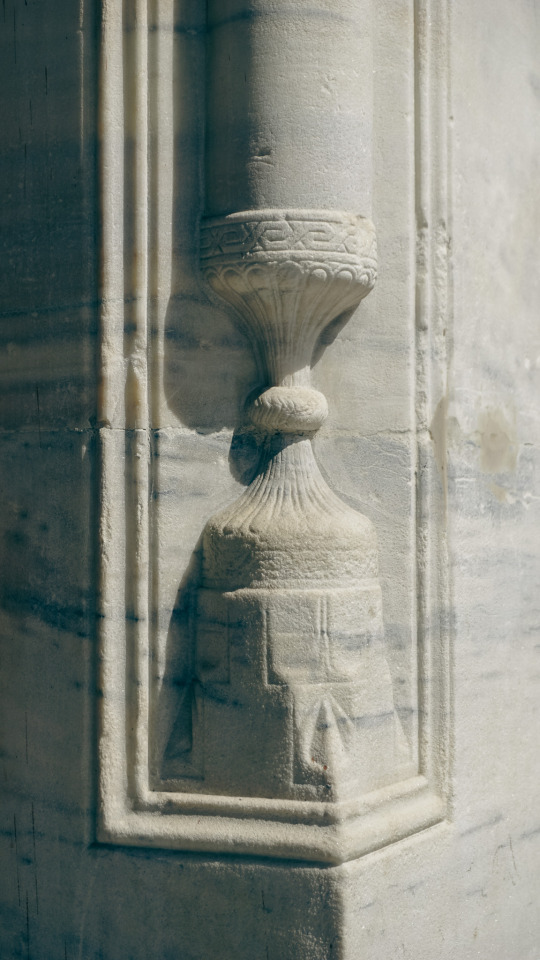

In general, the 4th Vakıf Han building is an important building that carries the architectural richness of the Ottoman period to the present day. Contributing to the historical atmosphere of Sirkeci, this inn is a part of Istanbul's cultural heritage and offers its visitors the opportunity to discover traces of the past.
0 notes
Text
Sirkeci Garı

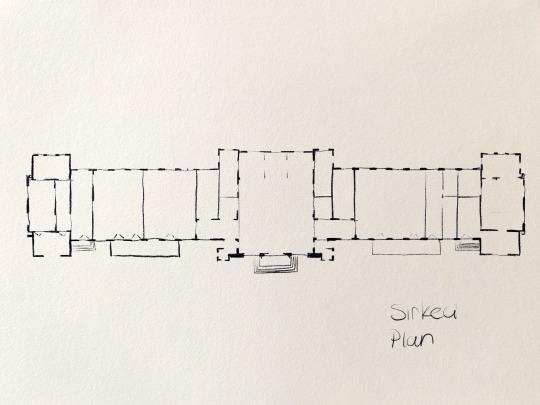
Sirkeci Train Station is a building located in Sirkeci, one of the historical districts of Istanbul, and forms an important part of the city's cultural heritage. The station was built by the German architect Jasmund in 1890, during the last periods of the Ottoman Empire in the 19th century.
The architecture of the station bears traces of the Orientalist style, which was the popular style of its period. Orientalist architecture creates an "Oriental" atmosphere by combining the exotic and mystical elements of the East with the aesthetic understanding of the West. Sirkeci Train Station was also designed in accordance with this style.
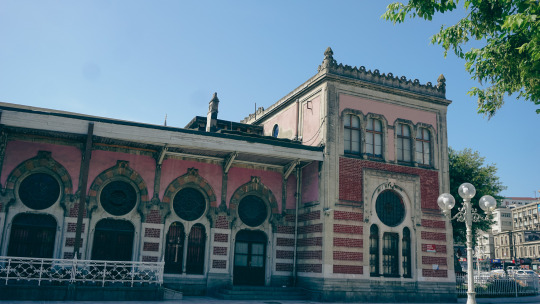
The station building attracts attention with its domed and arched structures. The details on the exterior of the building are decorated with motifs specific to Ottoman architecture. Dome-shaped towers rise on the roof of the station, while the arched windows and doors on the facade are examples of the Oriental style. In addition, industrial materials such as iron and steel were used in accordance with the technological possibilities of the period.
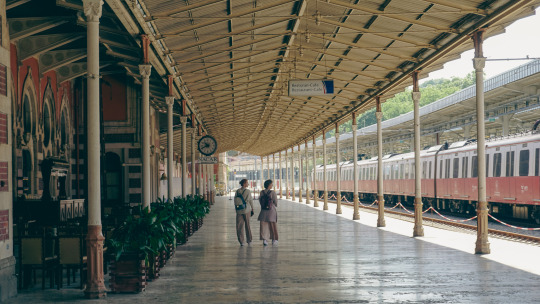
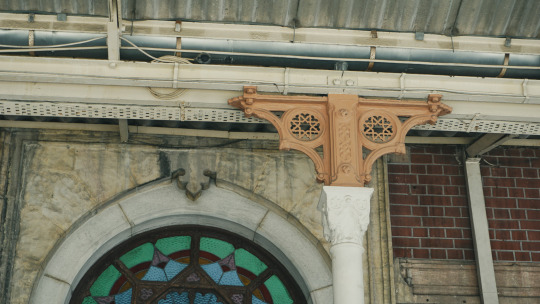
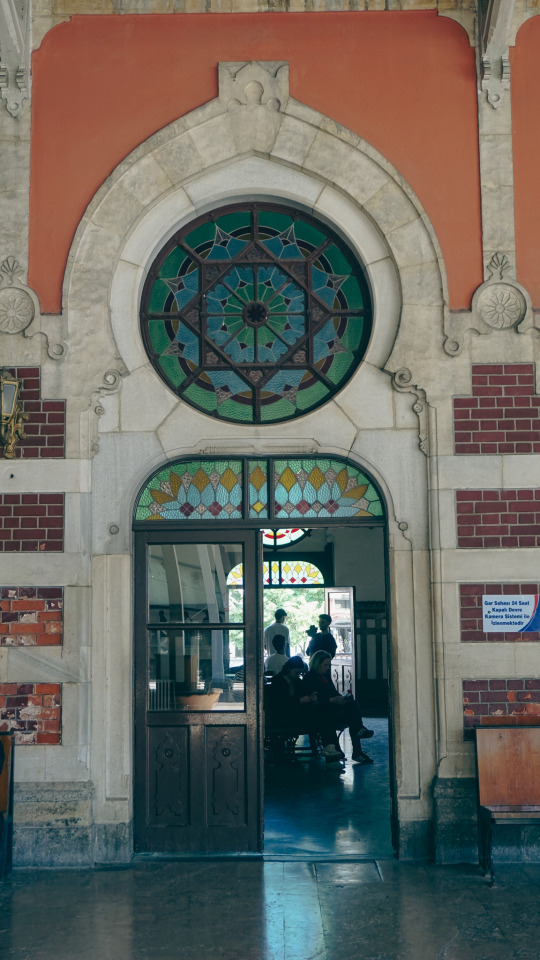
The interiors of the station are also under the influence of the Orientalist style. High ceilings, stained glass windows and patterned floors reflect the rich and colorful atmosphere of the East. These details take those traveling inside the station on a journey back to the past, in a time tunnel.
Sirkeci Train Station is an important building both architecturally and historically and culturally. This station, decorated with the impressive features of Orientalist architecture, reflects the historical atmosphere of Istanbul and its architectural heritage enriched by the synthesis of East and West. This station, which still functions today, continues to exist as a part of the cultural fabric of Istanbul.
0 notes
Text
Dolmabahçe Palace
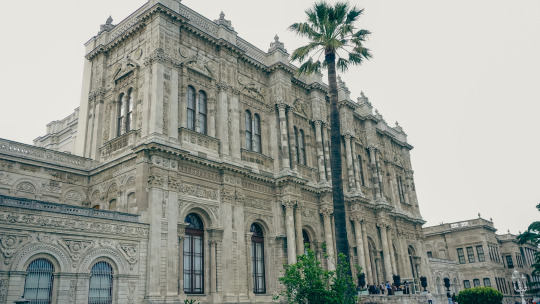
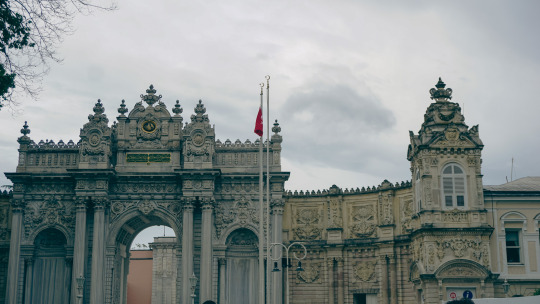
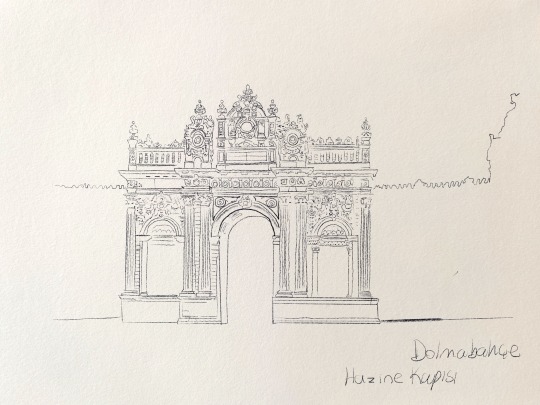
Dolmabahçe Palace is a building rising in Beşiktaş, one of the historical districts of Istanbul, with a magnificent view of the Bosphorus. The palace was built in the last periods of the Ottoman Empire and its architecture bears the influence of Western style.
The exterior of the palace resembles the classical palaces of Europe. Arranged symmetrically around a large courtyard, the building offers an eye-catching appearance with its high towers and elegant domes. The exterior of the building is decorated with white marble and ornamental columns, emphasizing the grandeur of the palace.
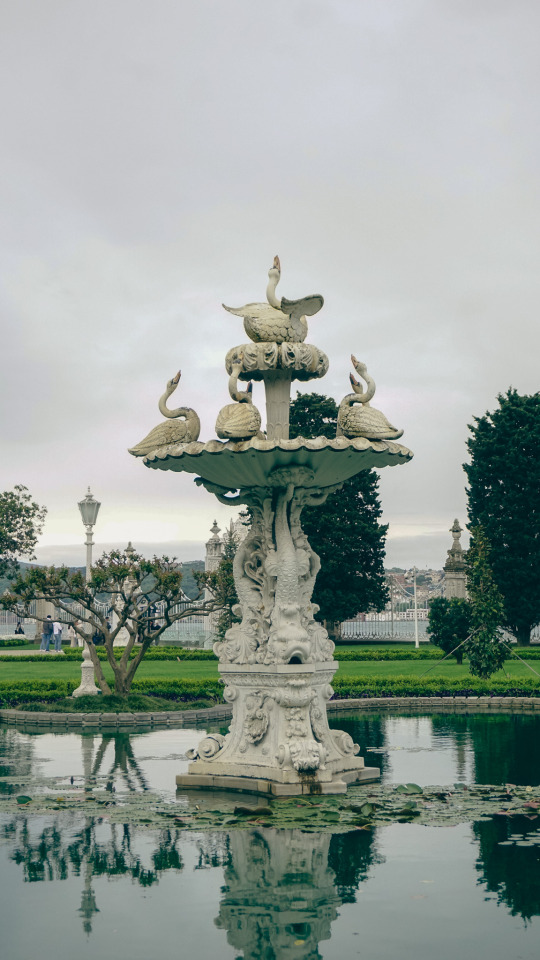
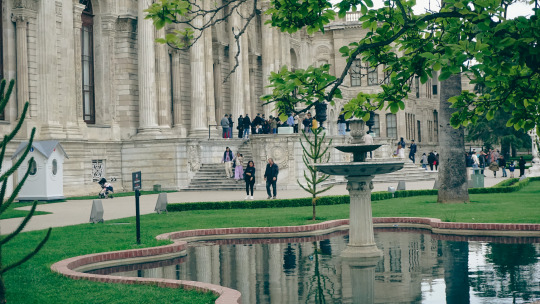
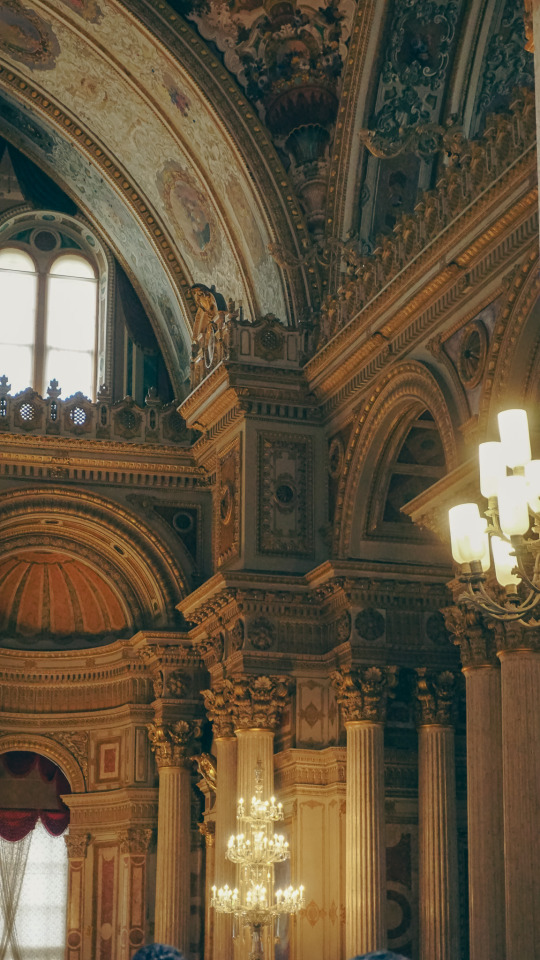
The interiors of Dolmabahçe Palace attract attention with their rich decorations and details. The rooms around the inner courtyard are equipped with luxurious furniture, crystal chandeliers and Ottoman motifs. The walls of each room are covered with frescoes depicting historical scenes and miniatures. Large living rooms, high ceilings and large windows add width and spaciousness to interior spaces.
The most magnificent part of the palace is the Examination Hall. This hall attracts attention with its huge dimensions and magnificent decorations. The ceiling, covered with gold leaf, is covered with an enormous dome and illuminated by elegant pendant chandeliers. The walls of the hall are decorated with frescoes depicting important events of the Ottoman period.
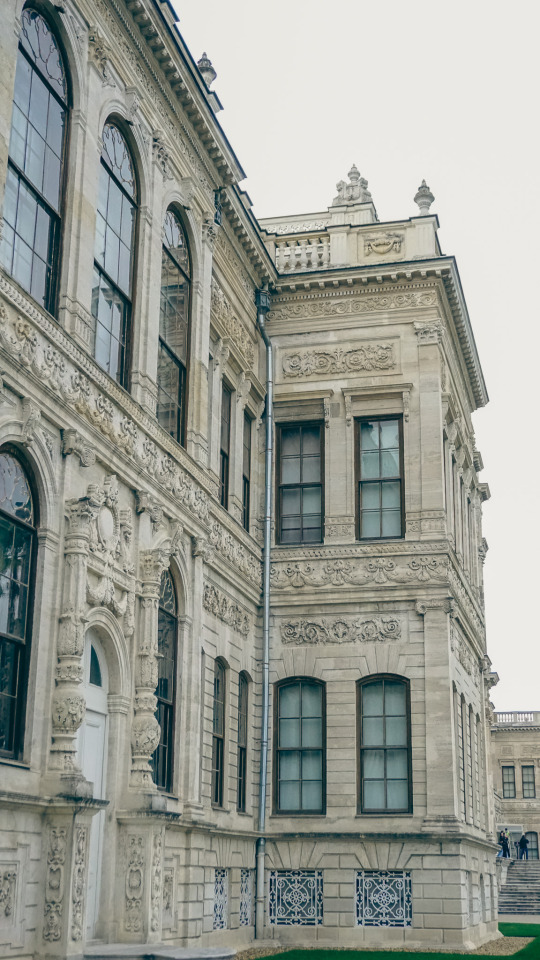
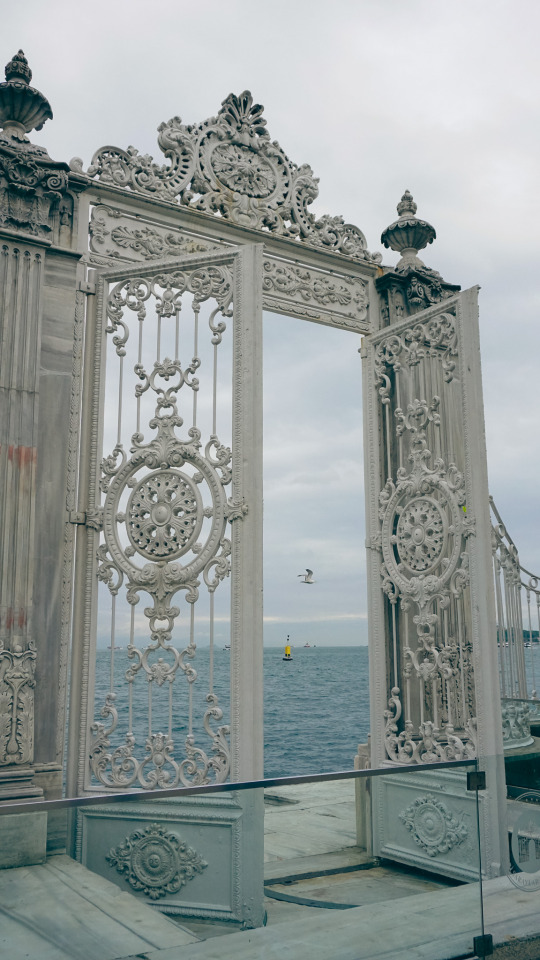
If I had to summarize my own opinions about Dolmabahçe, I thought it was a bit funny that the part facing the Bosphorus was decorated for show and the back façade was a straight wall. When we entered the harem part, I felt like I was in a very dystopian place. We were constantly kneading and passing through dozens of decorated rooms that were very similar to each other. It was something different that I experienced, but I'm not sure I liked it.
0 notes
Text
St. Antuan Church
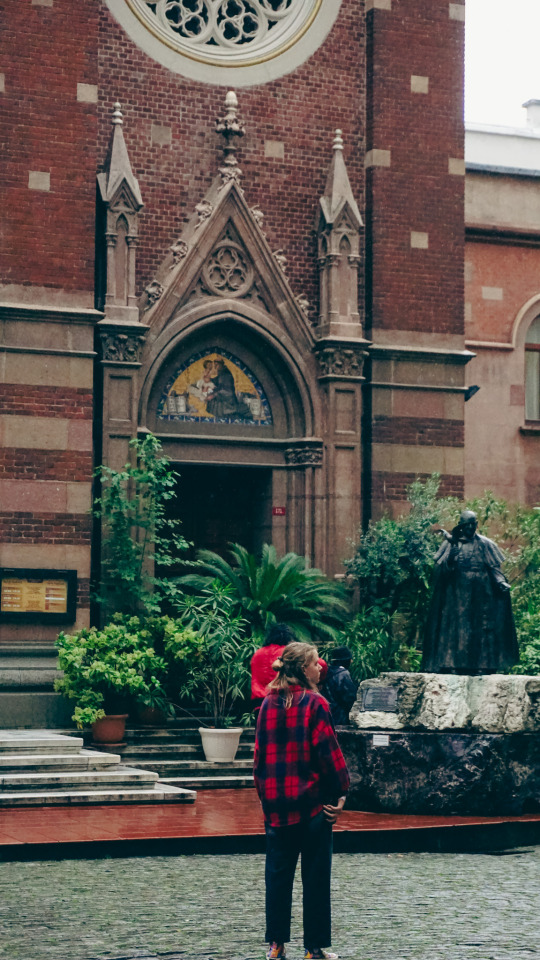
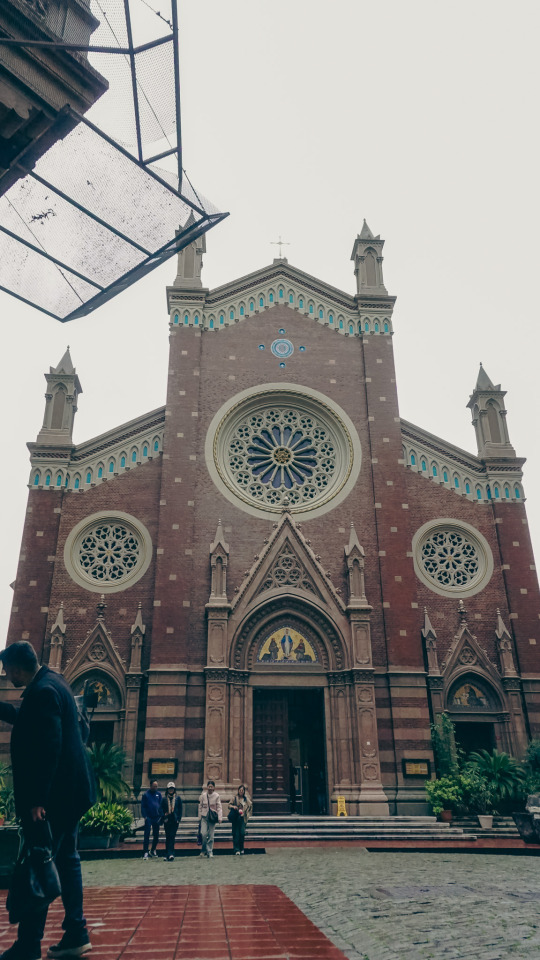
This church, named after the saints, is located in the Beyoğlu district of Istanbul, very close to Taksim Square. When I found the entrance, I was immediately impressed by the magnificent structure rising in front of me.
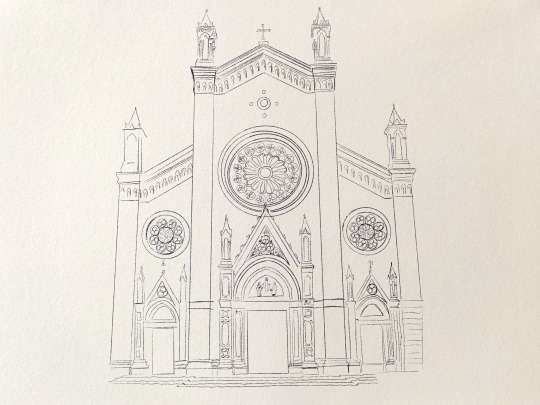
The exterior of the church appeared to me as one of the best examples of neoclassical style. Columns made of white marble and elegant arches added a fascinating atmosphere to the church. The towers and bell tower rising above the entrance gate completed the impressive silhouette of the church.
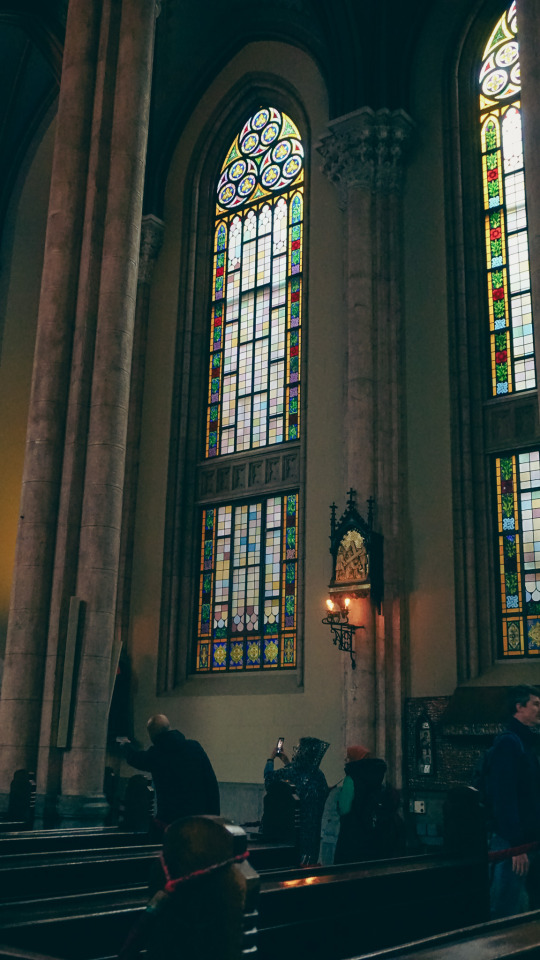
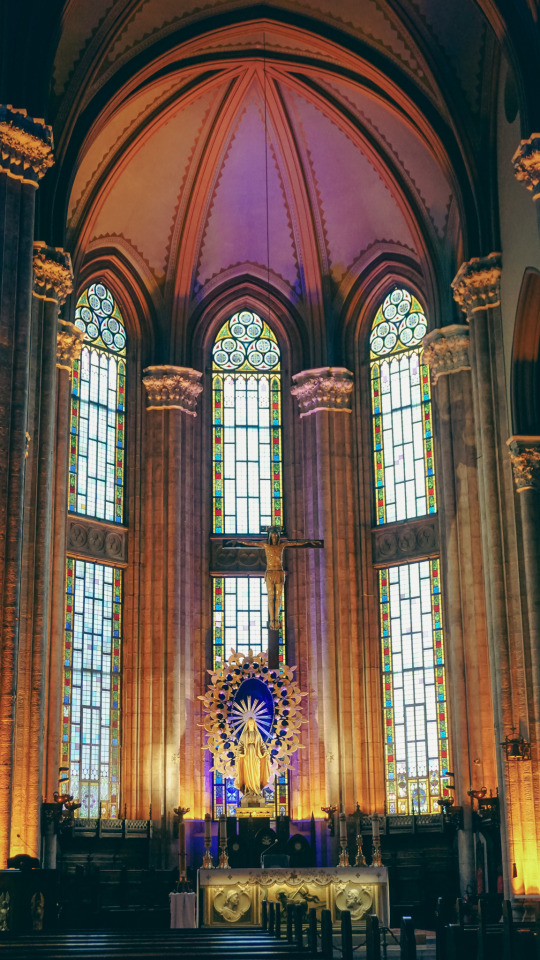
When I stepped into the church, a warm atmosphere welcomed me. High ceilings were illuminated by natural light filtering in through large windows. The colored glass stained glass windows, together with the colored lights spreading on the walls, turned the interior of the church into an art gallery. These glass panels, on which sacred figures and religious symbols were engraved, added a mystical atmosphere to the church.
I think the Catholic Church of Anthony of Padua was not only a place of religious worship but also an architectural masterpiece. Visiting this church was not only a religious experience but also an encounter with art and history.
0 notes
Text
Casa Botter
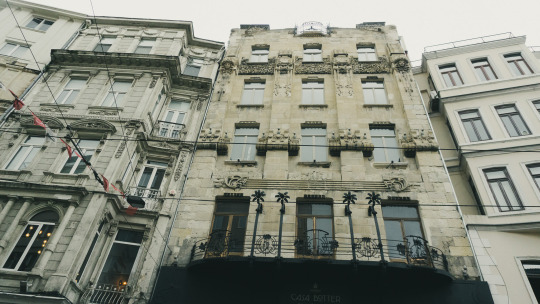
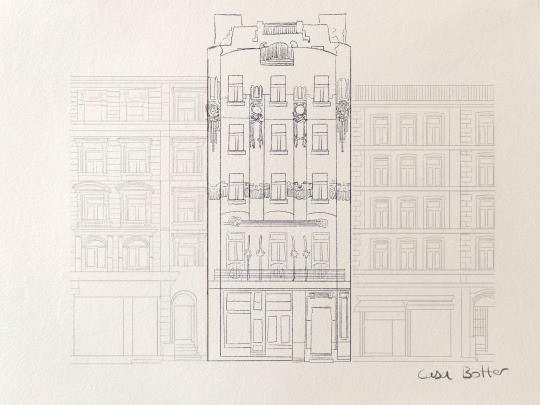
When you come to Casa Botter, you may be surprised to see such a building in the heart of Istanbul. Rising among the crowds of Istiklal Street, this building attracts attention as a beautiful example of Art Nouveau style. This building, designed by Italian architect Raimondo D'Aronco in the early 1900s, was once used as the home and workshop of the famous tailor Jean Botter.
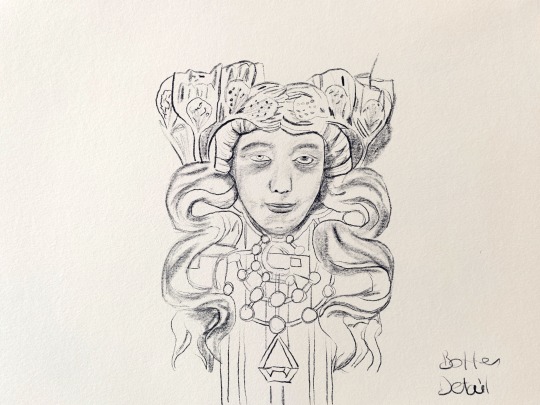
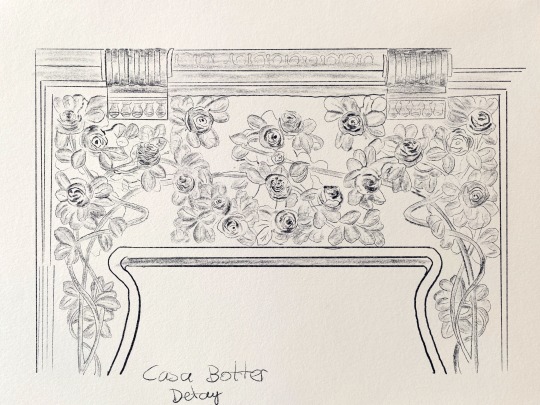
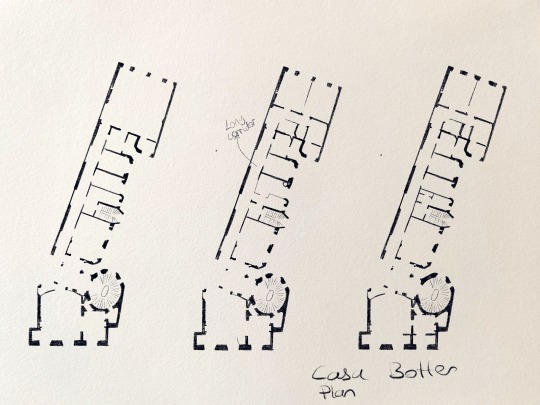
When you approach the building, the first thing that catches your eye is the detailed decorations of the facade. The curved lines and natural motifs on the exterior reflect the characteristic features of the Art Nouveau style. Elegant decorations around the windows and iron balcony railings enhance the elegance of the building. Large windows on the upper floors allow you to imagine how bright and spacious the interior is.
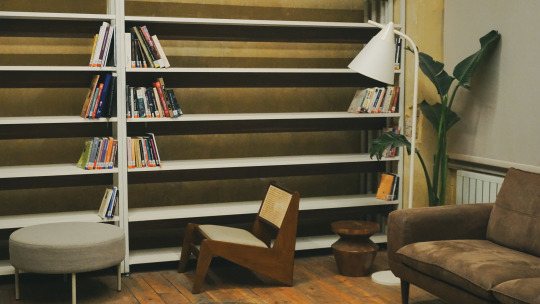
The restored version of the building gives visitors the chance to explore the history and architecture of Casa Botter. During the restoration process, original details were preserved and the characteristic features of the building were highlighted. In this way, Casa Botter was both preserved as a historical building and continued its functionality as a modern museum.
Casa Botter hosts cultural and artistic events. In addition to exhibitions, workshops, conferences and special events are organized. Thus, visitors are offered the opportunity to interact and experience culture as well as art.
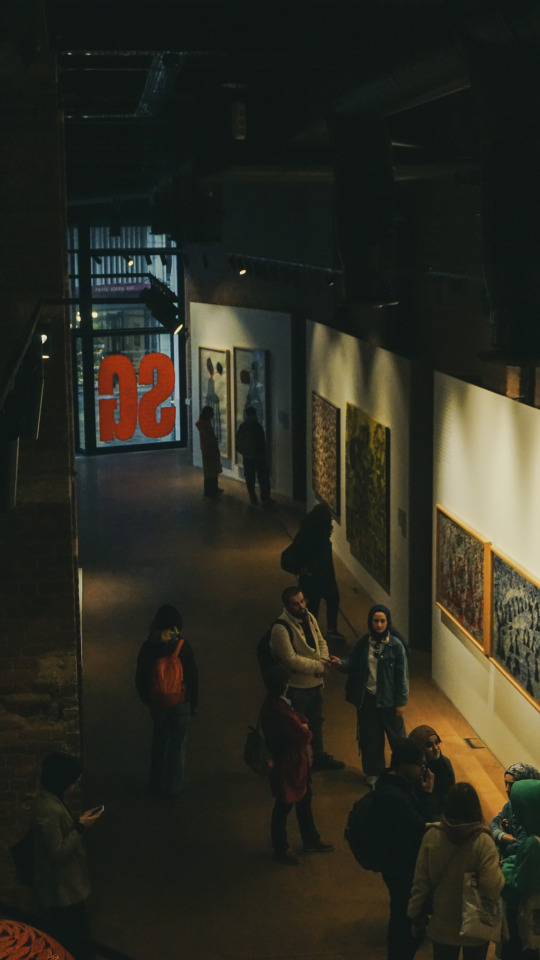
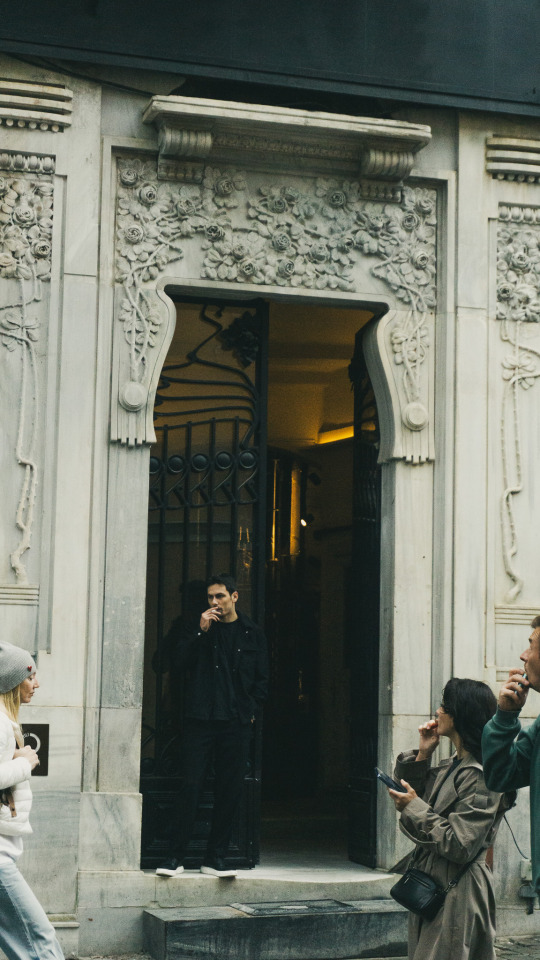

I think Casa Botter was one of my favorite buildings I entered in Istanbul. Preserving the interior as before and using furniture and lighting appropriate to the space greatly enhanced the experience of the space. It is a very nice opportunity that people can come here and sit and work.
0 notes
Text
Salt Galata
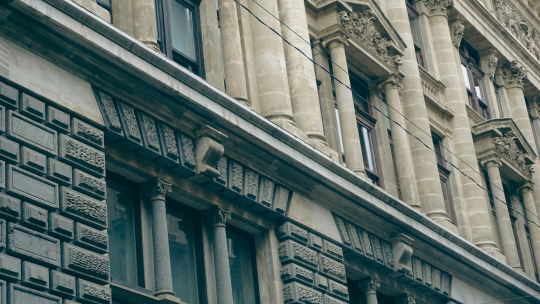

Salt Galata is a building located in the historical Galata district of Istanbul and attracts attention with its architecture. As you pass in front of the building, what immediately catches your eye is the magnificent harmony of old and new.
The exterior of the building is decorated with elegant stonework from the 19th century. This building, which draws attention with its high ceilings, large windows and arched doors, carries the aesthetics and elegance of the past to the present. As we approached slowly, we stopped and stared for a moment to take in the detailed decorations and fine workmanship on the stone façade. Each pattern on the stones was different from each other. This emphasizes what a unique structure it is.
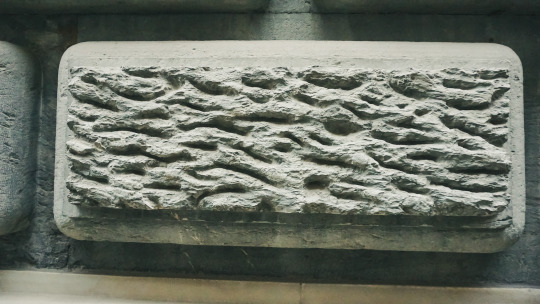
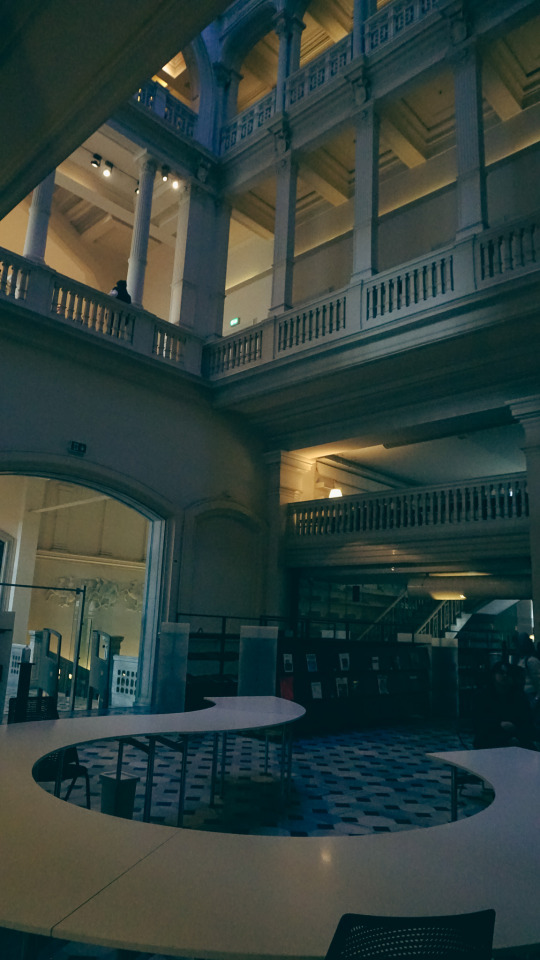
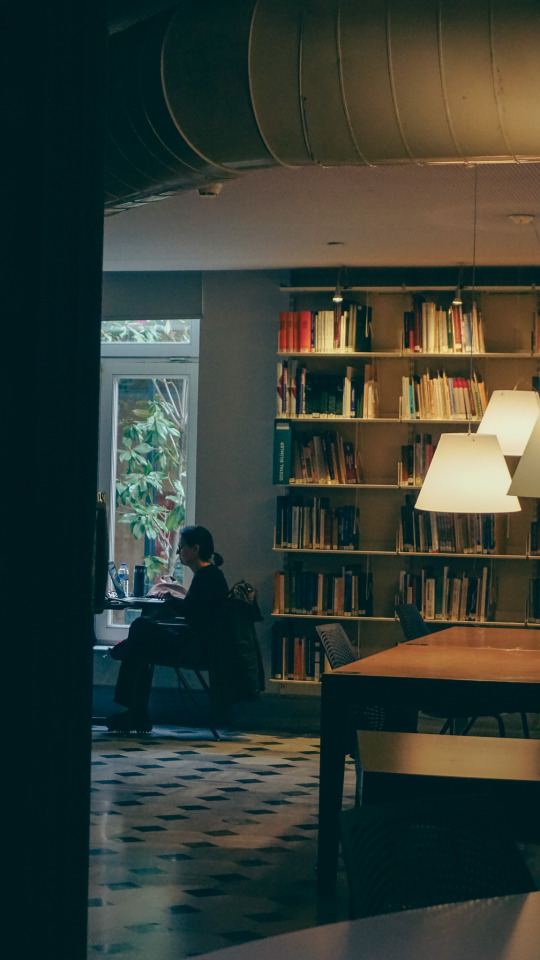

The library and research center located on the ground floor offers a quiet and peaceful working environment. Bookcases filled with wooden shelves bring together readers and researchers with knowledge. I envy people living in Istanbul for the opportunity to work in such beautiful places.
When you go up the stairs, large exhibition halls and meeting rooms welcome you. These areas host works by both local and international artists.
As you walk around the building, you feel the harmony of history and modernity in every corner. The areas where old bank vaults are transformed offer both an aesthetic and functional experience. Natural light filtering through large windows makes the interior bright and spacious.
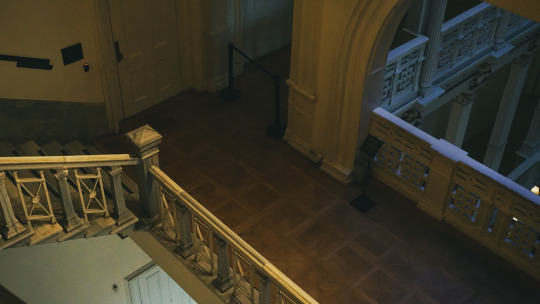
1 note
·
View note
Text
Germanya Han
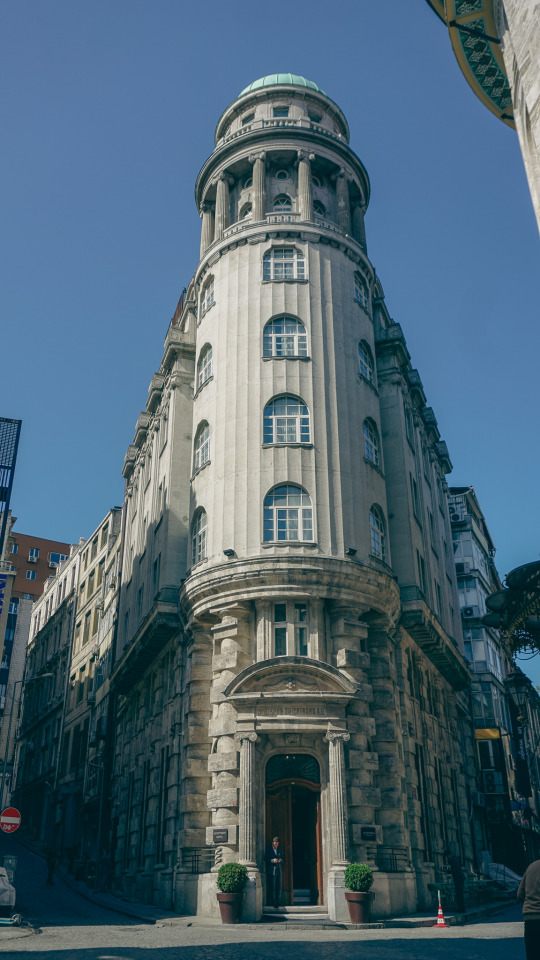
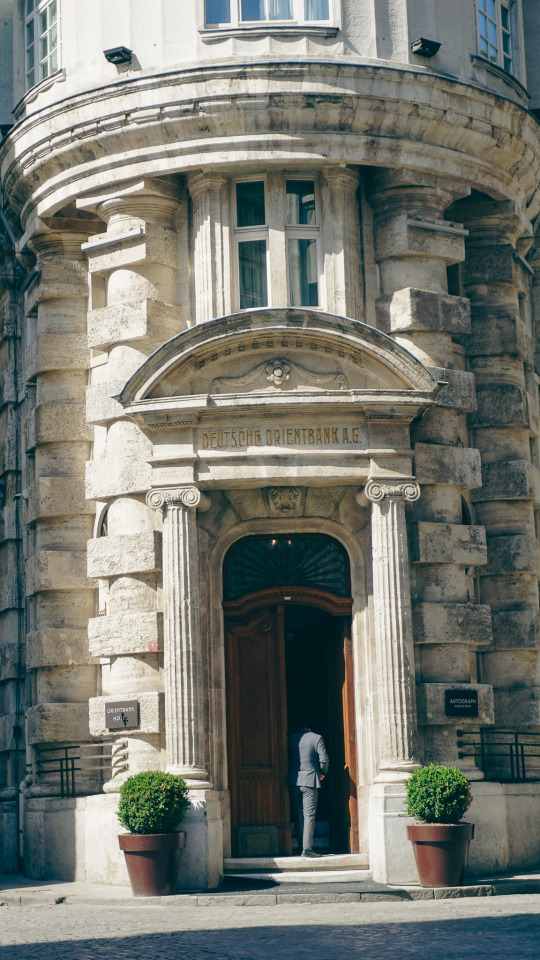
Germania Han is located in the Karaköy district of Istanbul's Beyoğlu district and is actually known as "Germanya Han". This inn was built at the end of the 19th century and was used by German merchants of the time.
The architecture of the Germanya Han reflects the Neo-Renaissance style common in Europe at the time. This style reinterprets the classical forms and ornaments of Italian Renaissance architecture. The facade of the building attracts attention with elegant columns, arched windows and detailed decorations. These elements increase the historical atmosphere and aesthetic value of the inn.
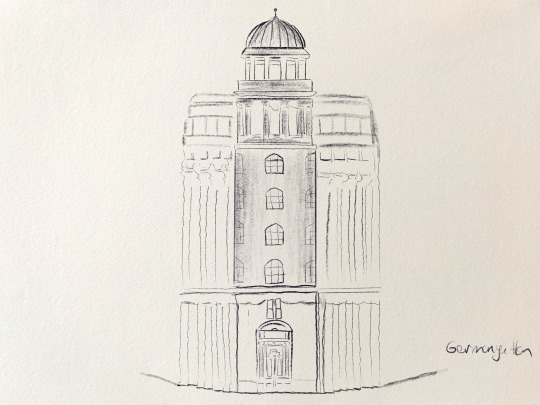
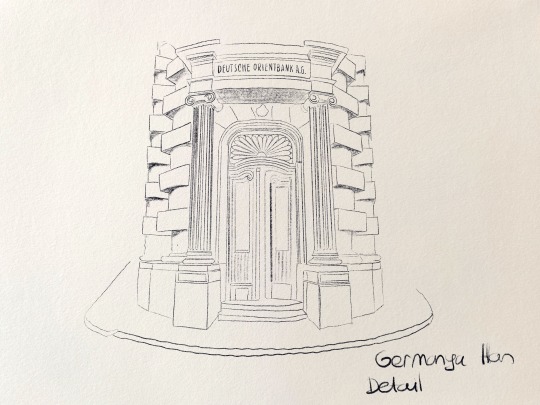
What impressed me most about the building was the integrity created by the cubic shapes at the entrance door and the oval shape of the building.
German Han stands in harmony with the historical texture of Karaköy and offers traces of the past to its visitors even with its exterior. While examining the exterior of the building, you can imagine what Istanbul was like in the past. This building stands as a piece of the past in the middle of the modern city and is worth a visit for history buffs.
0 notes
Text
Istanbul Modern
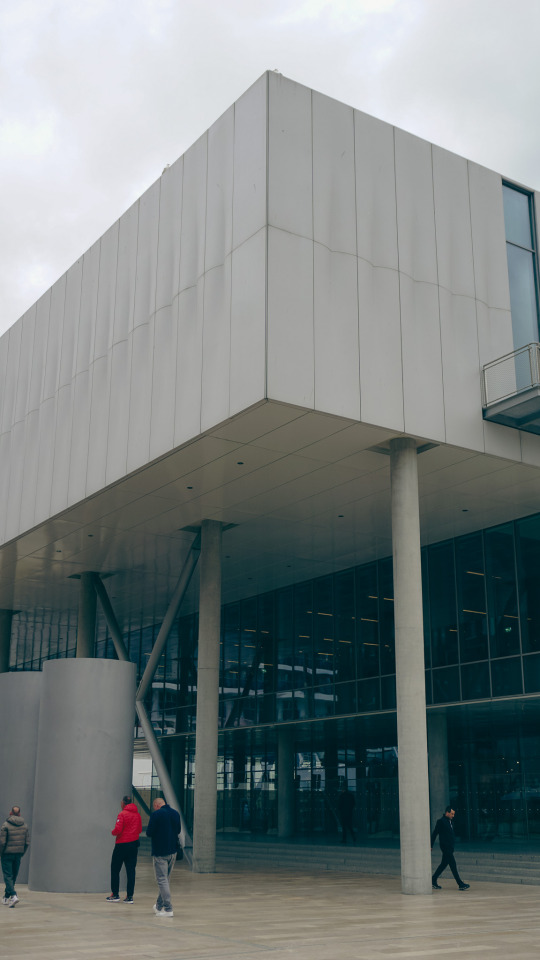
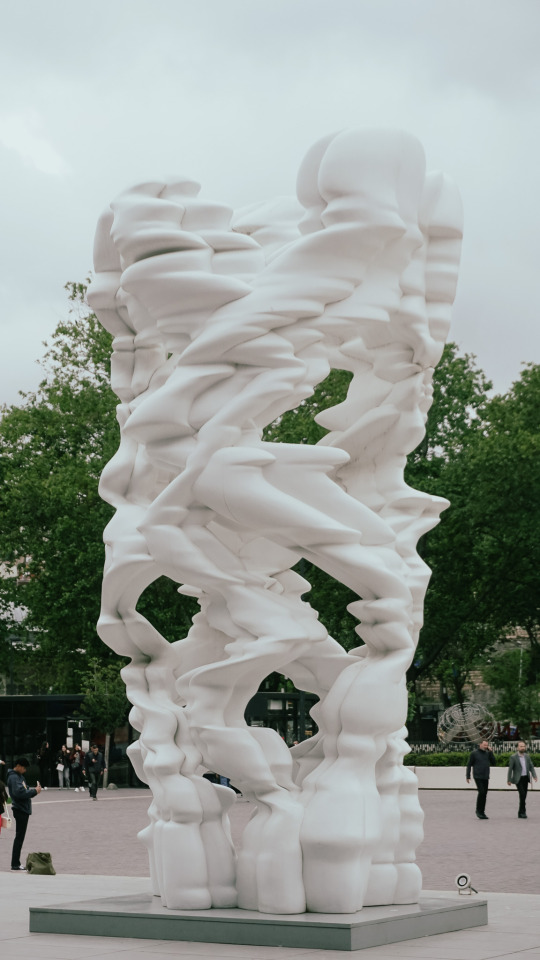
Istanbul Modern was one of the places we went to on our first day. It was designed by Italian architect Renzo Piano and opened in 2023. It has a modern and transparent design, glass and metal are used. It attracts attention with its large terraces overlooking the Bosphorus and spacious interiors. It's a great place to both display works of art and offer views of Istanbul.
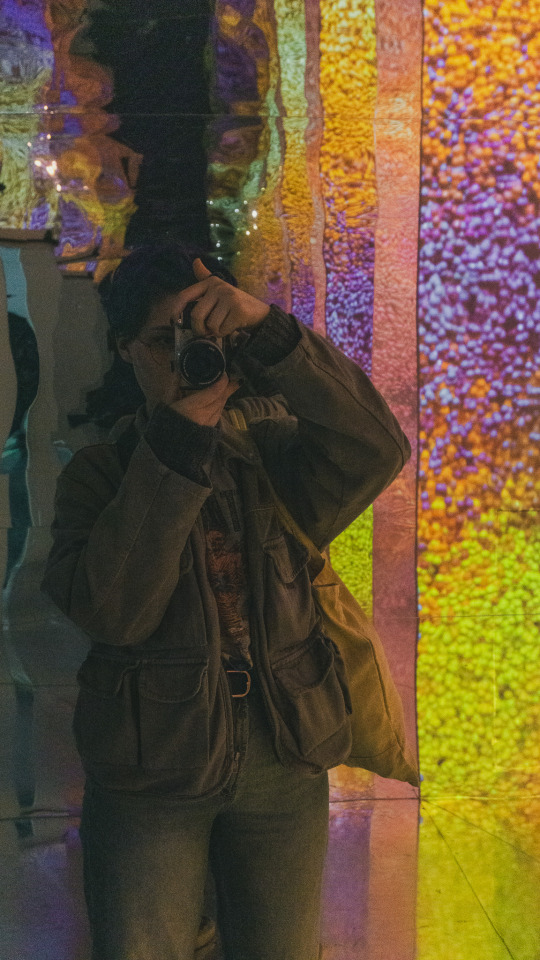
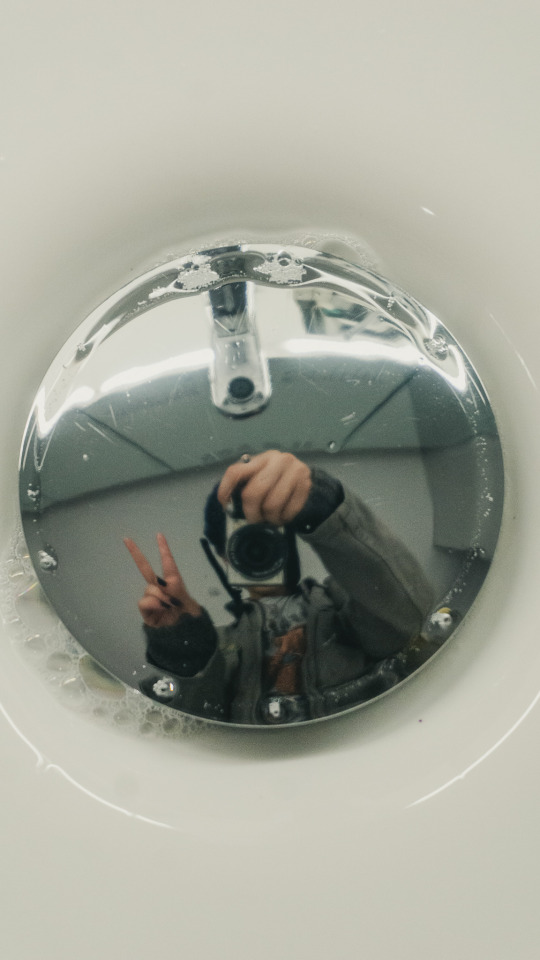
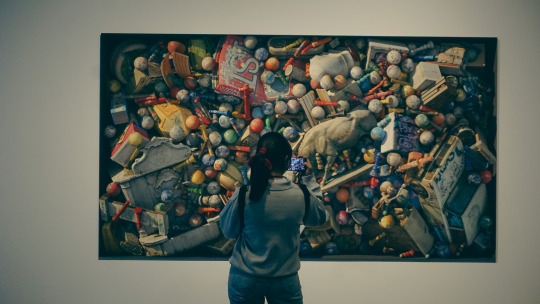
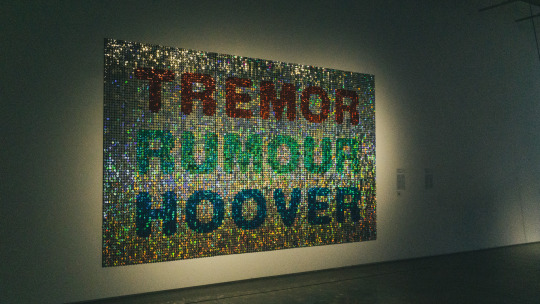

In this place, which hosts many works of art, there were works that impressed me a lot. The paintings were very beautiful. some interactive artworks were interesting.
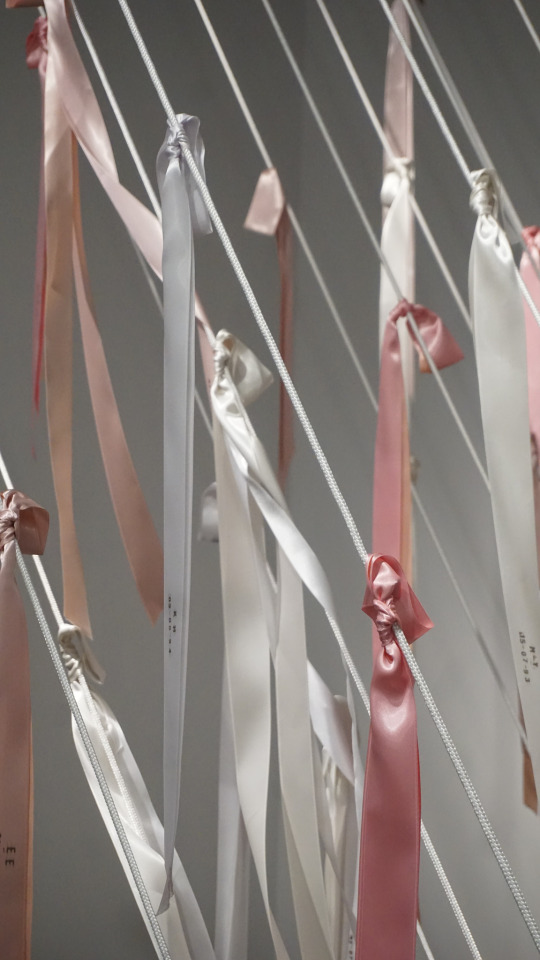
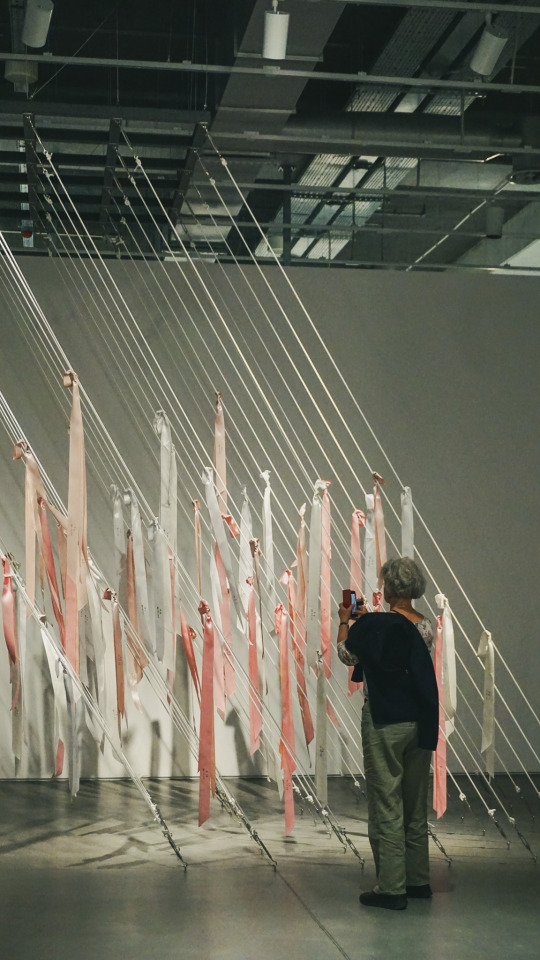
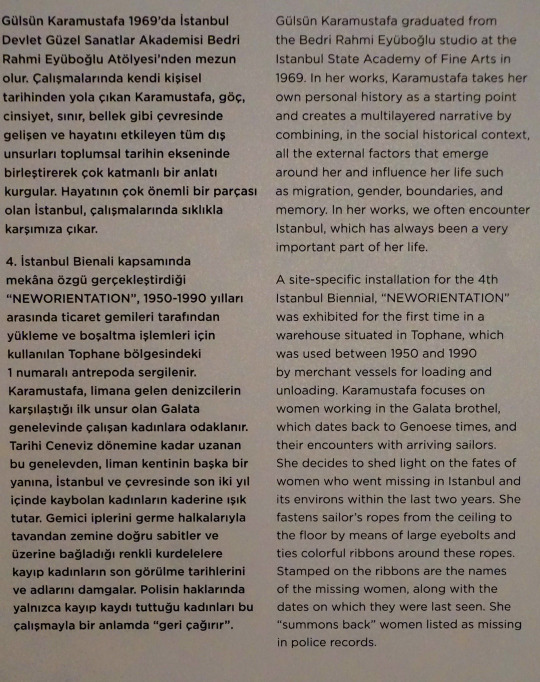
The work that impressed me the most was the one made with pink and white ribbons. It is very impressive that the artist connects the event with such materials in this work, which was made for women who worked in a brothel and suddenly disappeared.
0 notes
Text
Çiçek Pasajı
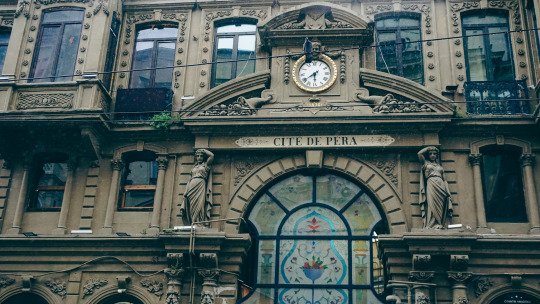
While walking on Istiklal Street, you are suddenly immersed in the fascinating atmosphere of Çiçek Pasajı. Built in the late 19th century, this building dazzles with its Neo-Renaissance architecture. The exterior of the passage attracts attention with its elegant stone decorations and arched windows. This place was once a part of the lively commercial life of the famous Pera region.
When you step through a wide and high door, you are greeted by a spacious and bright corridor. The shops and restaurants lined up on both sides of the corridor make you feel like you're in a time warp. The height and arched structure of the ceiling add both a majestic and inviting atmosphere to the space.
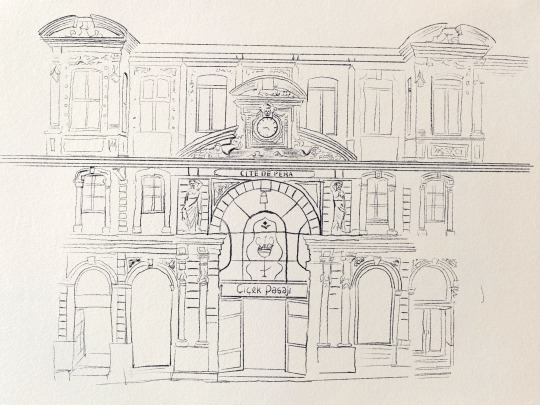
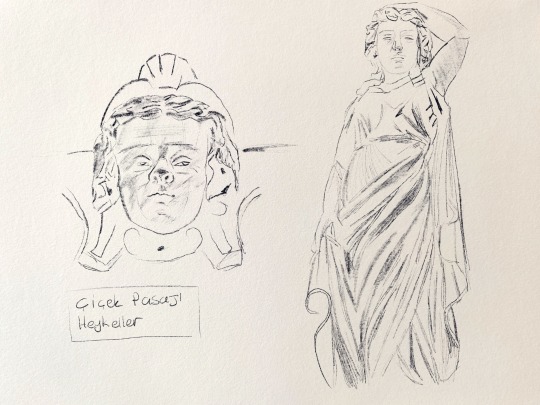
When you walk towards the middle of Çiçek Pasajı, the balconies and ceiling details decorated with elegant iron work attract attention. These details increase the aesthetic value of the building and reveal how carefully the architects worked. The glass sections of the ceiling let in natural light and keep the space bright and lively.
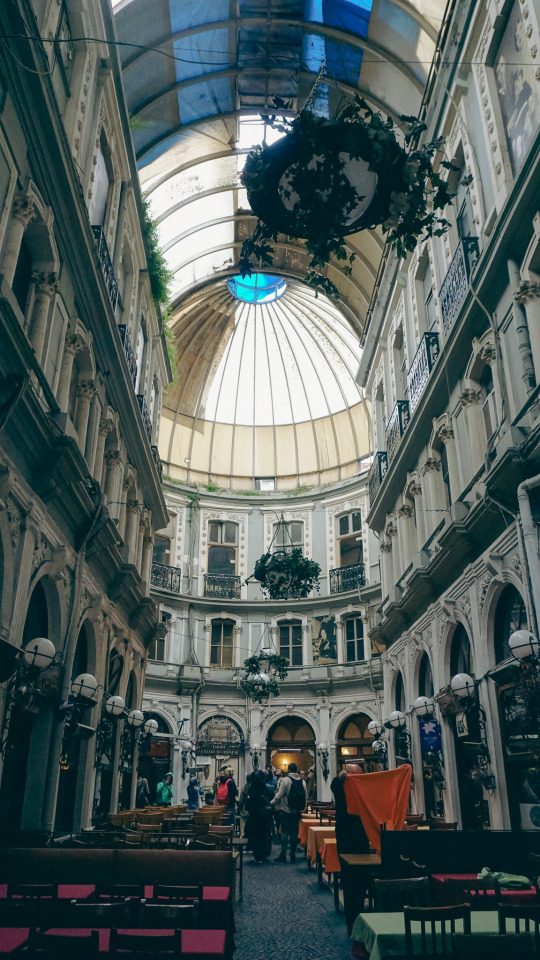
As you walk through the passage, you experience a modern experience in a historical atmosphere. A different detail is noticed in every corner; The decorations, arches and balconies literally take you back to the past. This building attracts the attention of everyone who comes to Istiklal Street, not only with its architecture but also with its historical texture.
As you leave Çiçek Pasajı, you realize that this historical building is not just a shopping place, but also an important structure that carries Istanbul's past to the present. With its architectural details and atmosphere, Çiçek Pasajı presents the historical texture of Istanbul to its visitors in a simple but impressive way.
0 notes
Text
Welcome to The Blog
The main reason I started this blog was actually for an assignment in my architectural history class — to document my trip to Istanbul. But even back then, I had the idea of continuing it with my personal travels as well. It's been a while since that thought first crossed my mind, and now, little by little, I’ll be sharing both the places I remember fondly from the past and the ones I’ll explore in the future.
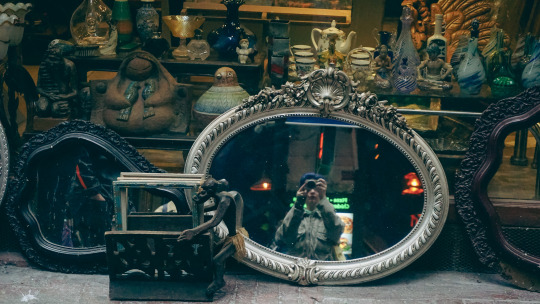
1 note
·
View note